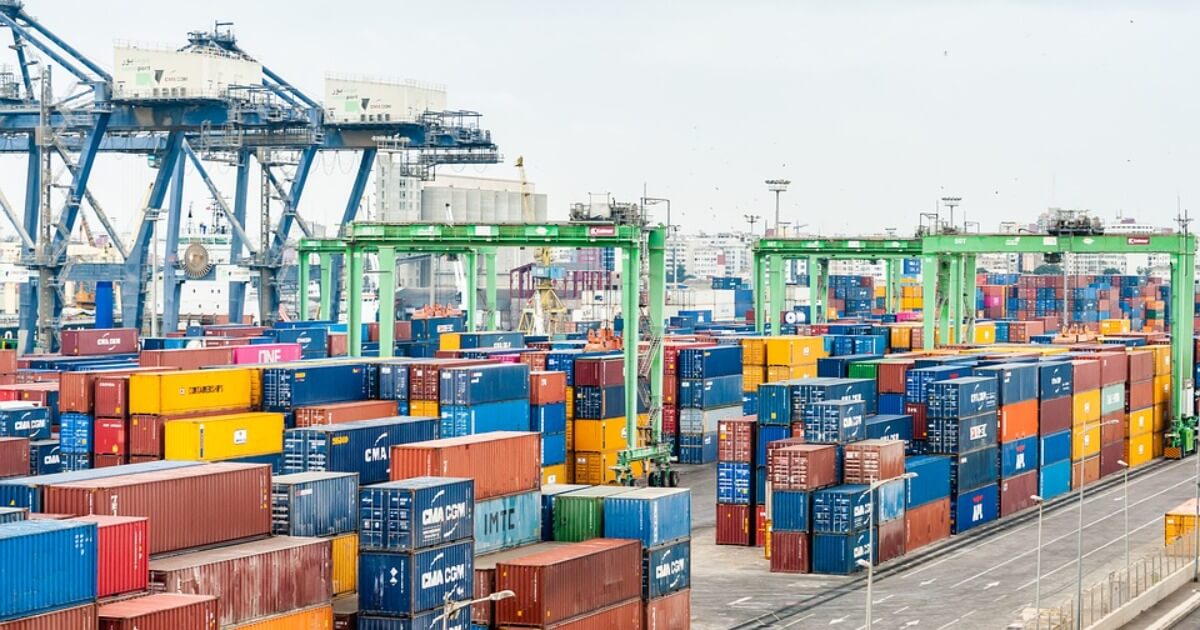Re-Globalization, Seriously?
Modernizing the trade system to meet 21st century challenges requires moving beyond the WTO’s consensus system.
April 20, 2023

A Global Ideas Center, Strategic Assessment Memo (SAM) from the Global Ideas Center
You may quote from this text, provided you mention the name of the author and reference it as a new Global Ideas Center, Strategic Assessment Memo (SAM) published by the Global Ideas Center in Berlin on The Globalist.
Whether you call it friend-shoring, resilience-building, environmental responsibility or whatever, the world economy is deglobalizing. This trend enhances inflationary pressures and thus has negative economic effects for consumers and global growth.
20th century trade rules won’t do
At the same time, any serious effort suggesting that re-globalization is a worthy goal to pursue requires tackling the modernization of the international trade architecture to meet 21st century challenges in earnest.
The big-ticket items in this context include climate change, environmental degradation, low labor standards, human rights abuses as well as governance issues such as corruption.
These problems have proven difficult to address under 20th century international trade rules which require consensus among all WTO member nations.
The WTO’s consensus practice stymies progress
The consensus system was adequate under the WTO’s predecessor – the General Agreement on Tariffs and Trade. With 23 founding members back in 1948 and limited goals, GATT contracting parties reduced industrial tariffs.
As we have learned the hard way, pretending that 164 WTO members, at very different levels of economic development, can agree on important issues affecting their economic well-being was a flight of fancy.
The failure of the Doha Round of trade negotiations in 2011, over a decade ago, is symptomatic of the failure of the consensus system. Alternatives are necessary.
A new negotiating model is needed
Future trade rounds will be unsuccessful if past negotiating models are employed. We can learn from successful bilateral and plurilateral trade negotiations.
Most importantly, they involve a limited number of like-minded countries that share well-understood objectives. Increasingly these agreements address 21st century challenges.
“Variable geometry”: At most, a second-best solution
Alternatively, multilateral agreements could continue to rely on variable geometry – different obligations depending on a country’s level of development.
Variable geometry is implicit in the WTO Government Procurement Agreement, the Trade Facilitation Agreement, and the Information Technology Agreement.
However, variable geometry is a second-best solution. It leads to fragmentation of trade obligations among signatories. Developing countries seldom want to assume additional obligations when their economic circumstances improve.
The conundrum to be fixed
The root cause of many 21st century challenges is that the international trade system does not factor externalities and other social damage into wholesale or retail prices.
Unlike parties to regional trade agreements, WTO members have little economic incentive to address environmental, labor or human rights issues.
Countries with lower social and environmental standards – think China – may enjoy a comparative advantage when lower standards allow them to price products more cheaply.
Industries in countries with higher standards risk being less competitive in such cases and may migrate to countries with lower standards. This race to the bottom may bring economic development to poorer countries, but at a high social and environmental cost.
Learning from the Uruguay Round
We can learn from the Uruguay Round agricultural negotiations during which WTO members converted non-tariff barriers into tariffs. Likewise, WTO members should be required to quantify environmental and social costs, including emitted carbon, and factor these costs into product prices and border taxation programs.
This would provide an economic incentive for members to reduce environmental and social damage. Such “social protectionism” levels the playing field for members addressing 21st century challenges.
The tariff-based system is obsolete
The tariff-based system is built on an antiquated base. Rules of origin are not uniform across countries and vary within countries depending on whether the WTO Agreement, a free trade agreement or a GSP program applies.
Whether based on changes in tariff clarification, value addition or manufacturing processes, the allocation of tariffs is arbitrary. More significantly, it does not reflect the reality of modern supply chains that incorporate components from different countries.
Duty drawback schemes complicate the economic effects of tariffs even more. Ironically, those that benefit most from a product’s sale, often the holders of patent and trademark rights (think major brands) can apply the tariff system to their advantage.
Moving beyond tariffs
Rather than deal directly with the growing obsolescence of the tariff-based trade system, trading countries have chosen, perhaps unwittingly, to reduce its relevance gradually.
Developed country industrial tariffs are already low. Goods enter duty free from countries that are members of a free trade agreement or customs union, or which benefit from various generalized system of preference programs.
Most high-tech IT goods now enter duty free under the plurilateral Information Technology Agreement which has 81 WTO members and accounts for 97% of high-tech trade.
Don’t tax goods, but…
In short, the tariff-based system is obsolete. Tariffs are taxes on consumers often applied by governments for protectionist purposes. In the 21st century, there are more important uses for taxation programs.
Instead of taxing products based on arbitrary rules of origin, why not tax goods based on the environmental and social costs associated with their production? Civil society (as well as economists and accountants) would welcome this change.
Rules governing services trade also need modernization
Service sector trade rules are showing their age. First, it is difficult to structure service sector trade appropriately.
After all, preventing the cross-border entry of services, such as legal, accounting, medical, architectural, consulting, engineering from foreign sources is very difficult in the internet age.
It is also difficult, and often undesirable, to discipline consumption of services abroad – for example medical tourism.
Second, the line between goods trade and services trade is increasingly blurry. Goods once purchased in stores, such as software, CDs and DVDs, are now delivered over the internet.
Instead of importing goods, one can now download plans or purchase a license to produce a patented product on a 3D printer.
One way forward would be to negotiate based on the presumption that all service sectors are deemed open unless they are scheduled as closed. This approach is more likely to produce liberalization, leaving members to apply regulations to maintain quality and prevent abuse.
Criteria needed to determine developing country status
WTO practice allows each member to classify itself as developed or developing. In addition, there are no rules for “graduation” from developing country status. Approximately two-thirds of WTO Members classify themselves as developing countries.
The list of “developing countries” includes wealthy countries such as Singapore, Kuwait, Qatar and the United Arab Emirates. While the benefits to be gained from developing country status are scant, self-selection undermines WTO legitimacy and is one factor used to challenge globalization.
If WTO members are going to continue to accord tariff preferences to developing countries, they should adopt strict criteria for developing country status, perhaps including per capita income, gross national product and other relevant criteria.
Use mutual recognition and equivalence agreements
Domestic regulations and standards are necessary to protect legitimate health, safety and security objectives, but they do function as non-tariff barriers.
Trading countries need to build better bridges between various national regulatory and standardization and testing systems through the negotiation of mutual recognition agreements and equivalence agreements.
Such agreements are much easier to negotiate within the framework of regional and bilateral trade agreements between members at similar levels of development. Again, plurilateral and bilateral approaches offer a practical way forward to facilitate trade.
It is time to modernize the trade architecture
Globalization can be reinvigorated to meet 21st century challenges – the question is how.
Globalization has produced more successes than failures. It has facilitated economic development in many parts of the world. But globalization is imperfect. It produces winners and losers.
It is based on an incomplete economic framework that does not price externalities and social costs into product prices. Progress addressing these issues is increasingly unlikely at the multilateral level.
Focusing on bilateral and plurilateral solutions
Bilateral and plurilateral solutions offer the best way forward to assure that 21st century challenges are met by trading countries. Agreements arrived at on that basis would level the playing field because they offer protection from non-members that flaunt environmental norms and human and labor rights.
It is unlikely that WTO members would agree to multilateralize this protection, even within the framework of variable geometry, until more bilateral and plurilateral agreements address these 21st century issues.
Editor’s Note: This article was co-authored by Patrick Macrory.
Takeaways
Whether you call it friend-shoring, resilience-building, environmental responsibility or whatever, the world economy is deglobalizing. This trend enhances inflationary pressures and has thus negative economic effects for consumers and global growth.
Pretending that 164 WTO members, at very different levels of economic development, can agree on important issues affecting their economic well-being was a flight of fancy.
The failure of the Doha Round of trade negotiations in 2011, over a decade ago, is symptomatic of the failure of the consensus system. Alternatives are necessary.
Relying on “variable geometry” – different trade obligations depending on countries’ level of development – leads to fragmentation. In addition, developing countries seldom want to assume higher-level obligations when they reach a higher level of economic development.
The cause of many 21st century challenges is that the international trade system does not factor externalities and other social damage into wholesale or retail prices.
Unlike parties to regional trade agreements, WTO members have little economic incentive to address environmental, labor or human rights issues.
Countries with lower social and environmental standards – think China – may enjoy a comparative advantage when lower standards allow them to price products more cheaply.
If production is migrated to countries with lower standards, this race to the bottom may bring economic development to poorer countries – but at a high social and environmental cost.
Instead of taxing products based on arbitrary rules of origin, why not tax goods based on the environmental and social costs associated with their production? Civil society (as well as economists and accountants) would welcome this change.
A Global Ideas Center, Strategic Assessment Memo (SAM) from the Global Ideas Center
You may quote from this text, provided you mention the name of the author and reference it as a new Global Ideas Center, Strategic Assessment Memo (SAM) published by the Global Ideas Center in Berlin on The Globalist.


